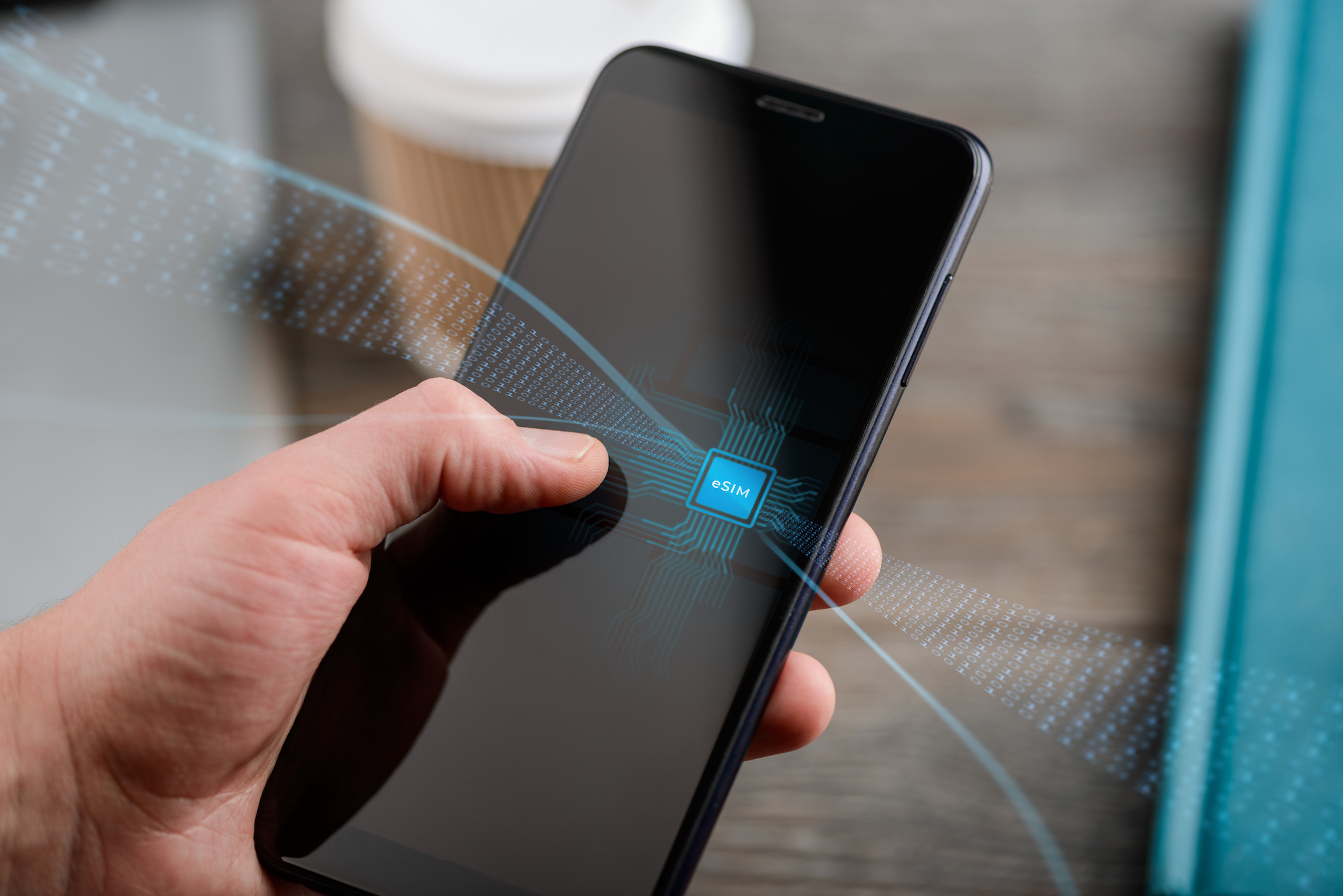Over the years SIM cards have been fundamental in the development of mobile technologies. Most phones wouldn’t allow you to make phone calls, send text messages or use data to access the web without them.
Now, eSIMs or embedded SIM cards are slowly taking over, removing the need for a physical card all together.
In the UK, EE, O2, Vodafone and Three offer eSIMs and most Samsung Galaxy and Apple iPhone devices support both standard and eSIM cards.
However, Apple has now dropped the SIM card slot for iPhone 14 models in the USA, so it’s only a matter of time before other smartphone manufacturers do the same.
Here’s all you need to know about moving to an eSIM:
How to set up an eSIM
Setting up an eSIM is simple. While physical sim cards need to be inserted into phones, an eSIM can be activated simply by scanning a QR code that registers your eSIM profile with your mobile network. Some networks may also need you to enter a code, but in most cases, you can be connected and ready to go within minutes.
An iPhone for example, requires you to go into Settings > Mobile Data > Add Data Plan on your device. From there you can scan your QR code.
This means you can also switch network providers with ease. Instead of having to visit a retail store or wait for a new card to arrive in the post, you can purchase your eSIM and access your QR code online.
If you’re upgrading from 4G to 5G, you can request a 5G SIM pack – just make sure you have a 5G enabled device.
Can I have multiple phone numbers with an eSIM?
Similar to using a phone with dual SIM card slots, an eSIM means you can have multiple phone numbers on one device, e.g. your work and personal number. You can even choose which plan your use for data, calls and messages.
Vodafone says that eSIMs enable more connected devices, simply because they don't require so much room inside a device, enabling small tech like fitness trackers or even glasses to have standalone 4G or 5G connectivity in a way they just weren't able to before.
Today, your Apple Watch will also come with the eSIM configured when you buy a cellular plan.
eSIMs take up less space
With most modern smartphones, you’re likely to find they work with a Nano SIM card. These tiny cards measure approximately 8.8mm, but eSIMs measure just 4mm and are built into the phone. The smaller size means phone manufacturers have space to add extra features - more battery capacity please!
There are also benefits for us as users – no fiddly cards to work with and no need to find a paper clip if you ever need to take out the SIM.
eSIMS are kinder to the environment
Not only are eSIMS more convenient than SIM cards, they are better for the environment too.
The manufacturing of SIM cards and their packaging tends to generate a lot of plastic waste, not to mention Co2. eSIMs, on the other hand, do not require any plastic packaging, which reduces waste and carbon footprint.
Plastic SIM cards need to be shipped around the globe – mostly by plane. By comparison, the eSIM uses almost no physical logistics. This results in a streamlined production and distribution process, and a more positive impact on the environment.
We implement strict procedures to reduce unnecessary waste, including packaging from handset suppliers as part of our commitment to ESG. Read more about how we’re working to reduce our impact on the environment here.
There is no rush to switch to an eSIM if you’re not ready. While your phone still offers a physical SIM card you can use that for as long as you want. There is no change in performance or overall experience with an eSIM and a standard SIM card.
However, the eSIM is very much the future for smartphones and devices. Even if you don’t have one now, it’s likely that your next phone will.
Find out more about eSIMs and discover the perfect business mobile phone contracts here.
